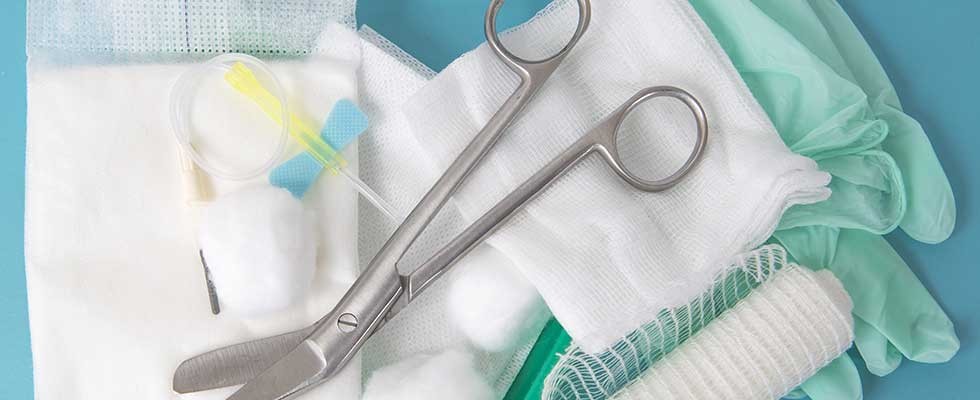
According to the Agency for Healthcare Research and Quality, more than 17,000 lawsuits related to pressure injuries are filed annually in the United States, second only to wrongful death lawsuits.
Being sued creates significant discomfort for all involved, including caregivers and employers. Beyond the time, resources and financial implications, it takes a significant personal toll. Who wants their ability, credibility and caring nature to be questioned? It’s not a pleasant experience, especially when challenged by a lawyer—some of whom make a living “chasing wounds.”
How do you best protect your organization from this threat? Health care companies need a system to collect and manage the documentation of skin and wound evaluations. Organizations should be looking for solutions that enable them to achieve four key components:
1 Enabling Best Practice Prevention & Care
Routine skin assessments conducted at the point of care help identify skin that’s at risk of developing pressure injuries. When this data is available in real-time through smartphone or tablet app dashboards, it gives you visibility on risk across your entire patient population. This gives you the ability to address high-risk patients with priority and ensure avoidable pressure injuries are eliminated at your organization.
The Centers for Medicare & Medicaid Services acknowledges that some pressure injuries are unavoidable, which means they occur even if a patient is receiving the best care possible. However, it’s up to a facility or agency to prove it did everything it was supposed to, and the patient developed a pressure injury despite those efforts.
When you identify an unavoidable pressure injury, your responsibility moves from avoidance to management. The fact that it is unavoidable does not obviate the need for best practice. Indeed, your responsibility for delivering best practice becomes even more important to ensure the best care for your patient and their pressure injury.
Apps on smartphones or tablets can deliver best practices to the clinician at the point of care and make sure that all relevant information about the wound is correctly collected in order to make informed decisions around treatments. In situations where specialized wound care resources are limited, having centralized wound images and data in a secure online dashboard means specialists can provide recommendations quickly from anywhere. The best wound dashboards give you visibility into all wounds in your patient population. These can be filtered by location, wound type and when they were acquired. You can quickly see which wounds are deteriorating and which are improving. This allows you to direct limited wound care resources to those patients who need it the most.
2 Workflows That Ensure Comprehensive, Complete & Admissible Documentation
Digital wound management tools provide an all-in-one system that captures, documents and reports the necessary wound-related data required for the prevention and treatment of pressure injuries. Through intelligent workflow, the technology provides comprehensive and complete documentation for the patient.
Wedesigned Swift Skin and Wound with the clinician in mind. The solution has configurable workflows that match the way nurses work with your patients. Clinical directors can make certain items required during image capture at the point of care (e.g., making a note of the location of the wound); other fields can be filled out later so that the bedside visit can be kept efficient and move quickly. The dashboards show which evaluations are not complete so you can follow up with staff.
3 Evidence to Prove Your High Quality of Care
One of the biggest pain points when it comes to litigation is the collection of documentation needed for a court case. With the best practices for prevention and care in place, your agency will most likely avoid litigation altogether. However, if you do come under the microscope in court, you want to be able to easily retrieve all patient-level information from the app. Look for an option in which it’s as easy as selecting the patient and picking the date range of the documentation that you want to pull; ideally, all information should be exported into PDFs, which can be printed and are admissible in court.
With a system like this in place, material that might have taken days for your already overworked clinical staff to dig out, copy and assemble can now be prepared in minutes.
4 Quality Assurance Monitoring
Ongoing wound care quality assurance monitoring is important to drive change, improve quality and mitigate risk—both financial and legal. Your wound care program should include a service where experienced, U.S.-based, certified wound care nurses methodically audit and then report on your wound care documentation. Look for a system that can:
- Ensure that your team is documenting wound care and caring for wounds appropriately
- Help your wound care team remediate documentation issues
- Reduce regulatory exposure, risk of fines and the potential for wound-related litigation
Scorecard reports should highlight opportunities for improvement, guide training and provide true insight into your care settings and practice.
If you don’t feel 100% confident that your current processes meet these standards, or if you are worried that your clinical staff may not be following the procedures you have put in place, it may be time to seriously consider a digital wound care solution. It’s the best way to standardize assessments and give visibility to management when these assessments aren’t being done—and to give you the peace of mind that all necessary measures are in place to avoid being sued.
